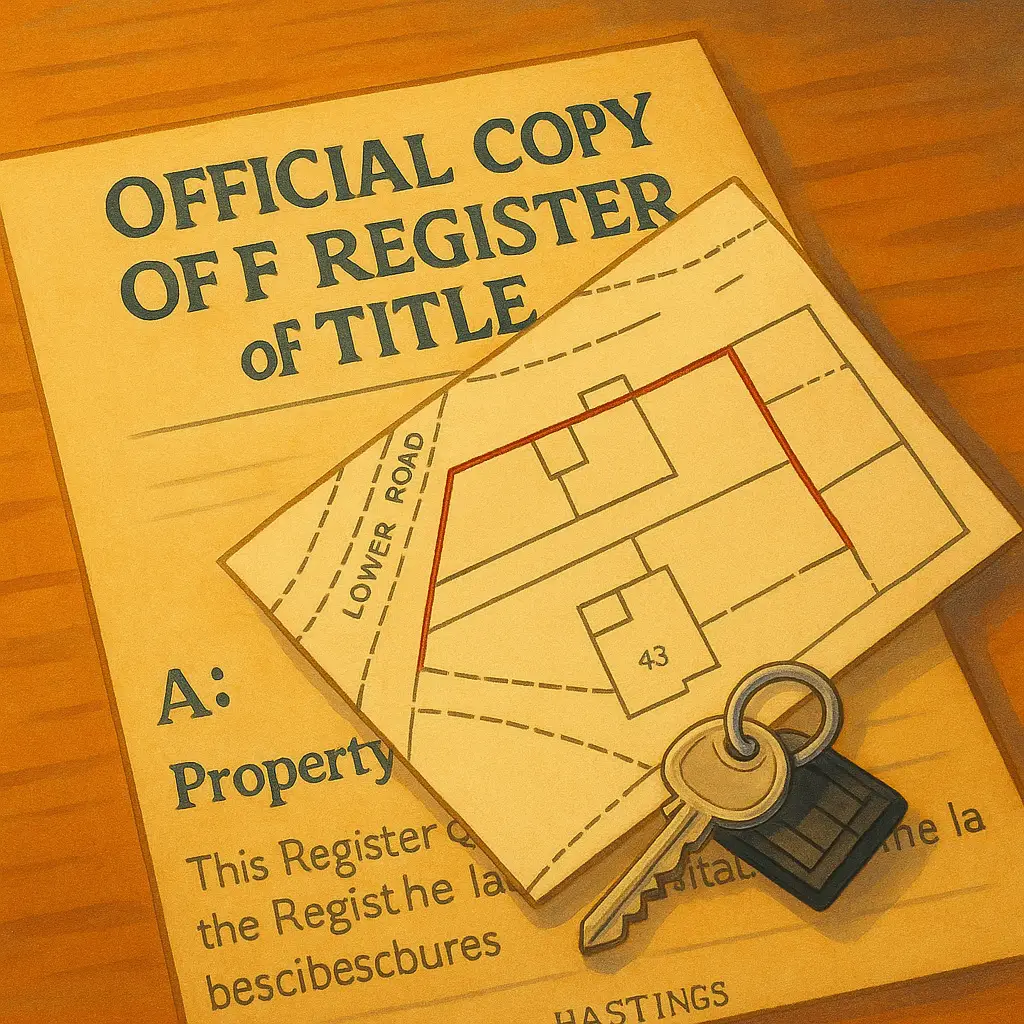Once your solicitor sends through the title deeds, don’t just file them away. The title deeds will normally comprise a title plan that shows the property boundaries on a map, and an official copy of the deed. These are the legal foundations of your ownership. Mistakes, restrictions, or overlooked clauses in the deed can cause major problems later—especially when you come to sell. Here are five things every buyer should personally check.
Property boundaries
Check the title plan and confirm that the red line correctly outlines the property you viewed and agreed to buy. Look for shared access routes, gardens, garages, or alleyways—don’t assume they’re included unless clearly marked. In the real world, inspect all boundary walls and fences, and assess all the trees and shrubs close the boundary. If you are concerned about the condition of the boundary or any adjoining vegetation, make absolutely certain you understand who will be responsible for remedial and maintenance. This includes damage caused by tree roots.
Ownership details
Ensure the seller’s name in the title deed matches the person you’re buying from. Discrepancies here can cause delays and may indicate issues with probate, divorce, or previous title registration. You will probably not have the full details of the seller, but confirm with your solicitor in writing that the identity of the seller has been verified and that it matches the ownership details on the title.
This is especially important if the property is owned by a company or trust. Your solicitor should handle this, but make sure they have confirmed the seller’s authority to act on behalf of the company or trust, that there are no restrictions, overage clauses or clawbacks in the deed. When you purchase from a company or a trust, expect the process to take a little longer.
Rights of way and access
Look for any registered rights of way or easements in the title deeds. These could allow neighbours to cross your land, or you to access services via another property. If any access looks informal in real life, make sure it’s actually protected in writing.
Remember to check access to your property or parts of your property through neighbouring properties, and access to neighbouring properties through yours.
Ask your solicitor to check for any legal access to pipes, cables, drains, and so forth that run over or under the property, and for any covenants that restrict building on or altering the property. This is not always clearly worded in the deeds, so ask your solicitor for written confirmation.
Restrictions or covenants
Scan for restrictive covenants—clauses that limit what you can do with the property. These might ban certain business activities, including short lets, building restrictions, and even mundane things like hanging laundry, soundproofing floor and walls and noise restrictions. Some may be decades old but still enforceable.
Title register class and grade
This is one of the key things your solicitor should check. The class and grade of the title deed show how strong the legal claim to the property is. In most cases, the title will be “Title Absolute”, which means the ownership is secure and very unlikely to be challenged.
If the title says “Title Possessory” or “Title Qualified”, it usually means some documents are missing, there are unresolved legal issues, or ownership hasn’t been fully confirmed yet. These types of titles can cause problems with getting a mortgage or selling the property later. If it’s not “Absolute,” ask your solicitor to explain why and what risks it brings.
If you are interested, you can read more on classes of title on .gov.uk.






